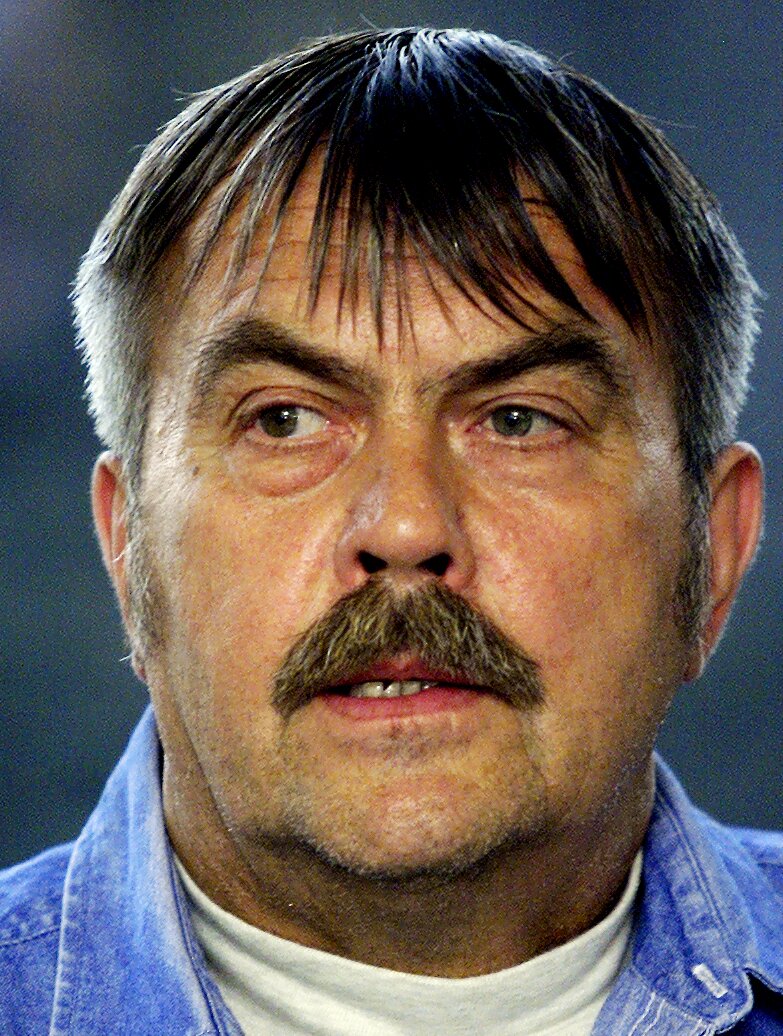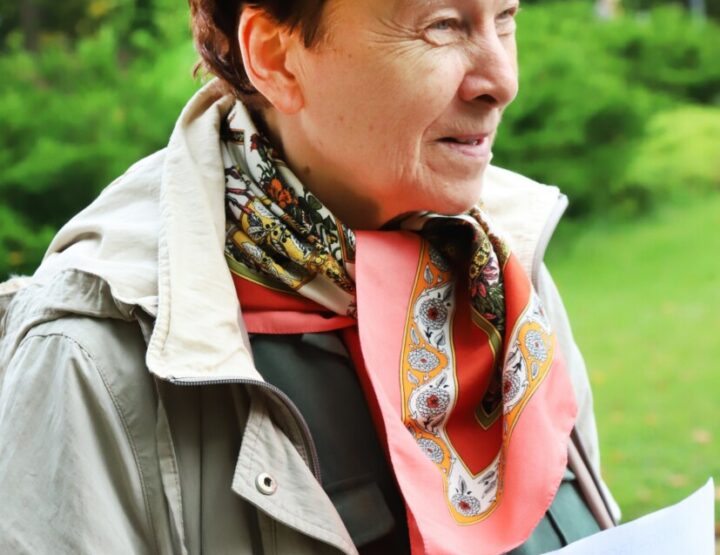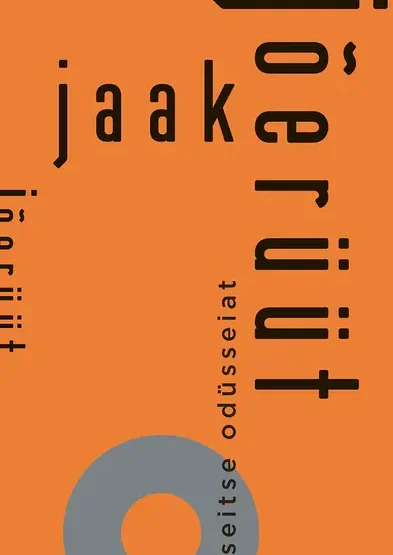Nikolai Baturin is one of the most exceptional and reclusive Estonian writers. The reception of his work has been contradictory: for a long time critics found that his books had too much of everything – be it playing with language, images or philosophy – i.e. he had no sense of proportion. It is true enough that Baturin has never been an ‘average’ writer or situated in the centre of the literary field; he has never wanted that. In an interview he once said: “…being unrecognised, yes, even unknown, is a condition, a sphere where it is good to live and create: there is no sense of duty, instead there is freedom to experiment, and no temptation whatsoever to flirt with the audience.”
Baturin’s (b 1936) life has been quite colourful: a fisherman’s son from Viljandi County, he had various jobs after graduating from secondary school; military service took him to the Caspian oil-fields and the Atlantic Ocean; for fifteen years he was a hunter in the Siberian taiga and a guide for geological expeditions. In response to the erudition in the humanities of his contemporary literati, he can present rich and unusual life experiences. To transform that into literature, he has used poetry, prose and drama.
Baturin debuted with a collection of poetry, Maa-alused järved (Underground Lakes, 1968), in the last wave of the “cassette” generation in the 1960s. His poetry is appreciated for its sensitive descriptions of nature and the revival of the tradition of dialect poetry; the elaborate associative language of images poses, at the same time, a peculiar contrast to the dialect. The collection Sinivald (The Blue), published in 1990, gathers poetry of nature and ideas from a few decades.
His first prose book, Kuningaonni kuningas (King of the Royal Hut) was published in 1973 and tells about the experiences of a hunter in a Siberian taiga. In the 1970s Baturin published prose along with collections of poetry, characterised by the blending of epic and lyrical elements: the descriptions are poetic, occasionally the prose text breaks into verse, and Baturin has also tried the genre of prose poems (Varahilisel ajal; At an Early Late Hour, 1974). The main topic of Baturin’s prose is seeking the balance between man and nature. The world of his books is a wide world that occurs in three settings: primeval forest, desert or sea. The journey of the main character through the desert or forest blends with the journey in his own consciousness – in order to understand the meaning and purpose of his life, he remembers his past experiences. Symbolically, the travelling denotes a mental journey through choices and trials, where man’s moral core crystallises. Baturin emphasises that it is the sense of nature that directs man, like a compass, to the source of existence. Standing alone, face to face with nature, it is possible to perceive the right dimensions of our temporal life, and this helps to shed the arrogant belief in the almighty human mind.
Baturin calls his plays, published in the collections Teemandirada (Diamond Path, 1986) and Kummitus kummutis (Ghost in the Chest of Drawers, 1994), ‘theatre of reading”, although a few of them have been staged as well. The play Kuldrannake, describing the life of Ado Reinvald, a poet of the National Awakening period, was very successful. In his plays, too, Baturin constructs exquisite exotic worlds: a path of diamonds in a primeval forest, an enchanted lake village, picturesque ruins, etc. They contain dramatic passions, subtle psychological undertones and theatrical polyphony, as well as music, dance and scenes of pantomime.
One of the most significant characteristics of Baturin’s oeuvre is his highly unique use of language. His vocabulary abounds with rare and new words; his texts are peppered with archaisms, dialectal words and expressions, slang, and fascinating derivations. The plenitude of word play, and Baturin’s own inventions, result in a rather Baroque style. In the early years, Baturin’s language caused quite a bit of opposition since it was regarded as artificial and presented difficulties in following the line of thought. In later prose, his style was somewhat more restrained – although still linguistically innovative and sensitive – and found wider acceptance. A high recognition of Baturin’s linguistic skills was the F. J. Wiedemann Language Award in 1994.
The novel Karu süda (Heart of the Bear, 1989) could be regarded as the turning point in Baturin’s work. A few years ago it was made into a film (director Arvo Iho, premiere in 2001). Critics offered verdicts such as “unusual”, and “unconventional”; it was generally decided that this novel did not fit the familiar framework of Estonian literature. The next great novels, Kartlik Nikas, lõvilakkade kammija ( Timid Nikas, the Comber of Lions’ Manes, 1993) and Kentaur (The Centaur, 2003) were received along similar lines. In the early 1990s, Baturin was classified as a minority writer, and his work relegated to the periphery of Estonian literature. Now, however, many wonder whether Baturin is too sweeping and far-flung, his works a phenomenon not graspable by the critics. In the opinion of Jaanus Adamson, he represents another literature within Estonian literature, Baturin’s literature being much bigger than Estonian literature. Such seemingly opposing opinions are united by a common conviction: whichever way one looks at him, Baturin is a totally atypical Estonian writer.
Heart of the Bear, Timid Nikas and The Centaur form a kind of trilogy. These are genuinely big novels, both in the literal sense (number of pages) and in their profound thoughts and beauty of form. They are united by an autobiographical starting point (regarding spiritual, not factual biography). There is, first of all, a striking similarity between the author’s and the protagonists’ names (respectively Niika, Nikas, Nikyas), and secondly a manner of depiction that has much in common with magical realism. Baturin rejects purely realistic imitation of life; instead he wishes to construct sovereign artistic worlds where the true nature of things, condensed into symbols, becomes apparent. He tries to reveal the hidden, but essential aspects of life. Experiences of real life are no more than a springboard for creating visionary worlds.
Baturin’s style is pictorial, emotional and rich in contrast. He unites the serious and the playful, low and lofty, moving freely between sensitive and stylistic extremes. Complicated and full of images on the aesthetic level, Baturin’s books carry a clear ethical message. In his own words, his principle idea is that artistic creation must shake and unnerve people, but it must happen within an ethical framework. The spiritual bases of his work are the chief values of the Christian perception of the world. His books are full of turbulent activity: the characters often have to stand face to face with death, suffer battles and natural catastrophes, experience great passions and tragic losses; they also participate in miraculous events with magical meanings. Whether hurling the characters (and the readers with them) into an abyss of misfortunes, or raising them to the apex of power and happiness, the main line is never lost: moving towards an ethical ideal and higher truth. Baturin holds suffering in high regard, as it is through suffering that a human soul becomes purified and serene.
Regarding his treatment of space and time, Baturin’s novels present powerful mythological panoramas. Eternity and the universe appear in the repetition of life patterns; unique life events acquire a dimension of depth through constant connection with the past. “In its principle construction the world is simple: what reign are the urge of return of everything in the past, and a desire for rebirth of everything dead,” says Baturin. The initial theme to which all repetitions and variations are reduced, seems to be the eternal struggle of Good and the Evil between people and within a single human being. A complicated system of reflections operates in Baturin’s books: the main theme multiplies because it is placed in mythical and historical associations, and the characters appear to live several lives at the same time, as they reflect ancient archetypes.
Heart of the Bear is a novel about nature, with myths and beliefs of northern peoples as a background. Its axis is a taiga hunter’s skiing journey through primeval forests, with glances back into the past as subplots intertwined into it. The main event on the mythological level is the hunter’s encounter and co-habitation with a bear who is transformed into a woman and whom he eventually kills – as a bear. The mythical roots of Timid Nikas are from ancient culture and the Bible – which are the most important sources for the author. On one level, he tells about his childhood in Viljandi County in the 1930s and 1940s, darkened by occupations and the world war. Specific historical and geographical realities are shaped into a symbolic reality through names and metaphors. The equivalent of the tools of power, for example, is a marble mask, colourful sparrows personify little boys, another name for Siberia is Nowhere, etc. Recent history is projected against the background of the Bible, in order to open the hidden meanings of the events. The protagonist is an archetype of a Christian martyr, having inherited a mission from his previous life – comb the lions’ manes straight, i.e. abolish evil from the world by means of goodwill.
The bulky and many-layered The Centaur, winner of the 2002 novel competition, has a global reach both in a geographical (desert, sea, oil-fields) and in a mental sense. The family saga of the protagonist and his purification through passion and suffering progresses against the background of the struggle of civilisations over oil supplies, which are running out. On a spiritual plane this is supplemented by the relations between the gods of major religions – Christianity, Islam, and Greek mythology. From among forceful images emerges destructive and purifying fire as the double symbol of the forces of life and death.
The multilevel nature of Baturin’s main characters is often expressed through their doubles, to whom they are connected by mysterious ties. The ‘better self’ of a character, or supernatural powers, are personified by, for example, Nganassan in Heart of the Bear and the Shadowman in Timid Nika. The Centaur’s Nikyas lives a double life as a super rich oil magnate and a mythological centaur; his double is a little boy, who personifies his childhood self. Baturin’s characters are not monolithic; they represent an assortment of persons or ‘selves’ with real powers. Baturin’s female figures stand close to nature. With their instinctive wisdom they simultaneously oppose and complement the male characters – as such, they are actually a suitable target for feminist criticism.
Baturin’s aim, in his own words, is to write in the key of the possibility of the impossible. Fantastic elements figure strongly in his novels, and for instance in The Centaur, the features of an anti-utopia are obvious. With postmodernist freedom, Baturin has employed the tricks of science fiction, crime novels and action literature. Other novels, such as Mõrv majakal (Murder at the Lighthouse, 1993) contain elements of crime novels. And there are warning novels with science fiction undertones: Ringi vangid (Prisoners of the Ring, 1996) and Apocalypse anno Domini… (1997). These two novels present devastating pictures of people shut into an infinite pursuit of happiness or tuned into puppets. Criticism is directed at spiritual deficiency, which in the writer’s opinion could well lead the human race into self-destruction.
Baturin is presently living at his home farm by Lake Võrtsjärv, far from the turbulent urban literary life. His powerful imagination and deeply pondering intellect are busy on a new novel, which he intends to place in a totally new environment – at the bottom of the sea, where life once started. However fantastic and exotic Baturin’s works may be, they are most tightly connected with today’s world – after all, he is tackling the principal questions of the destiny of man and mankind.
© ELM no 19, autumn 2004





